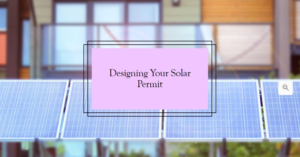Maximizing Your Energy: The Essentials of Solar Panel System Design

In today’s era of sustainability and renewable energy, solar power stands out as a beacon of hope for a greener future. As more homeowners and businesses embrace solar energy, understanding the essentials of solar panel system design becomes crucial for maximizing energy production and efficiency. In this blog, brought to you by One Place Solar, we’ll explore the key factors to consider when designing a solar panel system, empowering you to harness the full potential of solar energy.
- Assessing Energy Needs
The first step in solar panel system design is assessing your energy needs. Consider factors such as average energy consumption, peak usage times, and future growth projections. This assessment will help determine the size and capacity of the solar panel system required to meet your energy requirements effectively.
- Evaluating Roof Space and Orientation
Roof space and orientation play a significant role in solar panel system design. Assess the available roof space for solar panel installation and consider factors such as roof angle, orientation, and shading from nearby trees or buildings. Optimal placement and orientation maximize sunlight exposure, enhancing energy production efficiency.
- Selecting High-Quality Solar Panels
Choosing high-quality solar panels is essential for long-term performance and reliability. Consider factors such as efficiency ratings, durability, warranties, and manufacturer reputation when selecting solar panels for your system. Investing in quality panels ensures maximum energy production and longevity.
- Determining Inverter Type
Inverters play a crucial role in converting the direct current (DC) generated by solar panels into usable alternating current (AC) electricity for powering your home or business. Choose between string inverters, microinverters, or power optimizers based on factors such as system size, shading, and budget constraints.
- Incorporating Energy Storage Solutions
Energy storage solutions, such as batteries, allow you to store excess solar energy for use during periods of low sunlight or grid outages. Evaluate the need for energy storage based on your energy consumption patterns, grid reliability, and desire for energy independence.
- Considering Grid Connection Options
Decide whether to opt for a grid-connected or off-grid solar panel system based on your energy needs and location. Grid-connected systems allow you to sell excess energy back to the grid through net metering programs, providing financial benefits and energy security.
- Ensuring Compliance with Regulations
Ensure compliance with local regulations, building codes, and permit requirements when designing your solar panel system. Work with experienced professionals who understand the regulatory landscape and can navigate the permitting process seamlessly.
- Monitoring and Maintenance
Implement a monitoring and maintenance plan to ensure the ongoing performance and efficiency of your solar panel system. Regular inspections, cleaning, and performance monitoring help identify issues early and optimize system performance over time.
Contact One Place Solar Today
Ready to optimize your energy with a custom solar panel system designed by experts? Contact One Place Solar today to schedule a consultation. Our team of experienced professionals will work closely with you to design and install a solar panel system tailored to your unique needs, maximizing energy production and efficiency while minimizing costs and environmental impact.
Harness the power of solar energy and take control of your energy future with One Place Solar. Contact us today to get started!
[Contact Information: Phone: +1 209 682 5630, Email: info@oneplacesolar.com]
